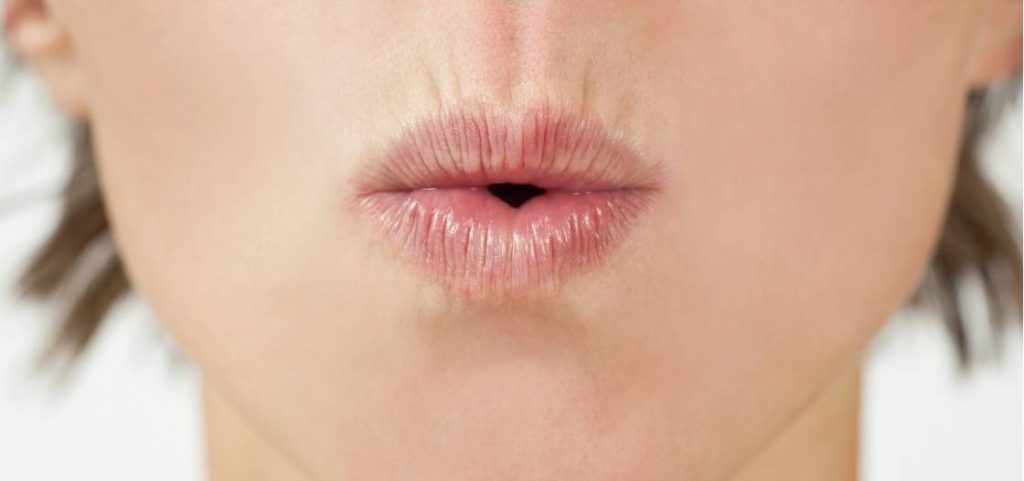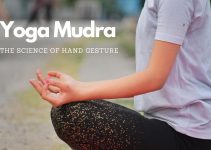
Kaki mudra is an elixir in these unprecedented times of COVID-19 when everyone is looking for ways to enhance immunity.
Kaki mudra aka raven beak gesture is one of the Mana mudras. Mana mudras are the meditative yoga mudras that involve the combined use of sense organs viz, eyes, nose, ears, tongue, and lips.
Besides being a mudra, it closely resembles the breathing practices like Sitali and Sitkari pranayama. Therefore, sometimes also referred to as kaki mudra pranayama.
Practicing kaki mudra requires a bit more effort than the hasta mudras. It is attained by inhaling through the pursed lips followed by exhaling through the nostrils. This is practiced gazing on the nose-tip (Nasikagra Drishti).
The internal benefits that you get out of kaki mudra are numerous. Also, the external glow that naturally reflects on the skin is a bonus for kaki mudra practitioners.
Meaning and Interpretation
The term “kaki” is taken from Sanskrit which refers to “crow” and mudra is defined as a “gesture“. By kaki mudra practice, the practitioner gets rewarded with longevity which is also associated with crows, hence the name.
Besides this, the mudra is practiced by puckering the mouth that mimics a crow’s beak. Hence, it is also named as crow’s beak gesture.
Kaki mudra is helpful in living an ailment-free life. However, it is important to know the pros and cons of kaki yoga mudra.
How to Do Kaki Mudra
- Sit in any meditative posture like sukhasana, padmasana, etc. or on a chair with an erect head and spine.
- Place your hands on the knees either in jnana mudra.
- Keeping the eyes closed relax the entire body for a few minutes.
- Open the eyes and shift your focus on the nose tip without blinking to attain Nasikagra Drishti.
- Purse the lips to give a tube-like structure to the mouth to suck the air in.
- Inhale slowly and deeply through the rounded lips keeping the tongue relaxed.
- Now, close the lips and breathe out through the nostrils.
- Repeat the same process for 3-5 minutes.
Contraindications and Precautions
It is important to practice kaki mudra keeping all these safety measures in mind.
- Unlike sitali pranayama, only lips are pursed in kaki mudra, the tongue should be relaxed inside the mouth.
- Do not practice it in case of depression or low blood pressure.
- Do not try this mudra if you are suffering from chronic constipation.
- People who are suffering from glaucoma or diabetic retinopathy must avoid it.
- Refrain from kaki mudra if you have recently had an eye operation.
- Attain Nasikagra Drishti only if you have practiced it before.
- Avoid its practice in cool weather or if are in a polluted area.
- Keep the eyes open while holding the mudra without straining the eyes.
Time for practice
- It is best to perform kaki mudra either in the early hours of the morning or before hitting bed.
- Start by practicing it for 2-5 minutes and gradually increase the time as your body gets used to the practice.
- It helps in cooling the body hence it is recommended as a counter breathing practice after heating pranayama.
Kaki Mudra Variant
There is another method to practice kaki mudra for better breath retention.
In this modified version, join the fingertips of both the hands and bring the thumbs to close the corresponding nostrils. Inhale through the mouth as described above and retain the breath in by relaxing the lips. Then, release the breath through the nostrils removing the thumbs.
Kaki Mudra Benefits
1. Improves digestion
Due to inhaling through pursed lips, the sucked-in air comes in contact with the membranes of the mouth. It elevates the secretion of saliva and also stimulates the upper digestive tract.
This promotes the secretion of digestive hormones, viz. pepsin, gastrin, and hydrochloric acid. Therefore beneficial in improving digestion.
2. Tones the face
As the facial muscles are exercised while holding kaki mudra. It strengthens the facial muscles and prevents the signs of aging like wrinkles. It is also beneficial in alleviating blemishes and makes the skin taut and glowing.
3. Cures respiratory diseases
Kaki mudra is a form of controlled breathing practice that makes the respiratory system stronger. It enhances lung capacity and strengthens the respiratory system.
People suffering from chronic pulmonary diseases such as bronchospasm, hyperinflated lungs, hyperventilation, etc.
4. Soothes the nervous system
Due to the controlled breathing practice in kaki mudra the body experiences cooling effects. This relaxes the body and calms the brain, hence relieves the nervous system.
Therefore, people who are frequently encountered panic attacks can also practice kaki mudra as a therapeutic practice.
5. Stimulates throat chakra
While practicing this mudra the air is sucked in through the mouth. It activates the throat chakra. This ultimately improves the efficiency of the thyroid gland.
6. Boosts immunity
As kaki mudra stimulates the thyroid gland, it regulates the secretion of the thyroid and parathyroid hormones. These hormones are mainly responsible for metabolism and improving the immune system. Thus, it helps in promoting the immunity of the body.
7. Cures high blood pressure
Kaki mudra improves the blood circulation of the body. Its coolant breathing effect balances pitta and provides relieving effects to the patients with high blood pressure.
Conclusion
Practice kaki mudra consistently along with regular pranayama practices to get the rejuvenating effects on the body. Besides cleansing the mouth, gums, and entire digestive tract, it is known for stimulating the taste buds.
Therefore, kaki mudra revitalizes the human body by uplifting the overall health and lets you live fully.




